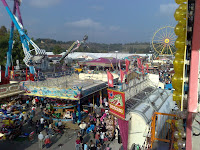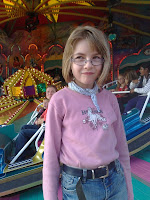Tom Seder and I openend the conference and welcomed our keynote speaker.
 I was very excited that Gert Volker Hildebrand accepted to be the keynote speaker for the 1st International Conference on Automotive User Interfaces and Interactive Vehicular Applications (AutomotiveUI 2009). He is with BMW Group in Munich and is the director of design for MINI. The topic of his talks was: „MINI Design: From the Original to the Original. The path from Center Speedo to Center Globe“. When I first came across the UI concept I wanted to meet the person – and a keynote is always one way 😉
I was very excited that Gert Volker Hildebrand accepted to be the keynote speaker for the 1st International Conference on Automotive User Interfaces and Interactive Vehicular Applications (AutomotiveUI 2009). He is with BMW Group in Munich and is the director of design for MINI. The topic of his talks was: „MINI Design: From the Original to the Original. The path from Center Speedo to Center Globe“. When I first came across the UI concept I wanted to meet the person – and a keynote is always one way 😉
I introduced the keynote with pictures from the Italian Job Movies (the first from 1969 and the second from 2003) and I find it impressive that the re-design inspired people to redo the movie.
In his talk he explained the design language used in the MINI- in short everything is a circles or a derivatives of circles. The concept of the center globe is a central sphere display that uses layers to include information. It has a horizontal surface (like a stage) and a background as well as a foreground.
The concept separates the UI for the driver (e.g. she gets navigation) and the passenger (she gets a access to the Internet). Search on Google or Bing for Mini Center-Globe and you get the idea. The concept uses a physical object (a sphere again) to transport content and to grand access – this reminded me of Durrell Bishop’s marble answering machine… Tangible UIs again 🙂
Gert Hildebrand also recommended his book „Mini Design“ by Othmar Wickenheiser and Gert Hildebrand. The books contains many design sketches and is partly English and partly German (only available at Amazon in Germany).
Overall the presentation showed again that likeability and aesthetics play an essential role in creating an attractive product – and especially an interactive product. Opening Automotive UI 2009 I made an analogy to mobile phones in 1998. Phones were then closed systems, UIs were very basic and it was very hard for 3rd parties to create applications. And now – 10 years later – UI and applications seem to play a more important role than the core technologies (or why would in 2007 people think a phone with a 2 Megapixel and without video recording and no UMTS is great).













